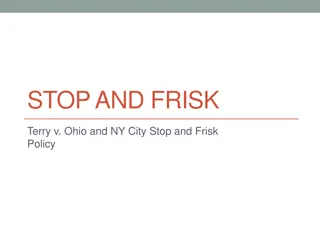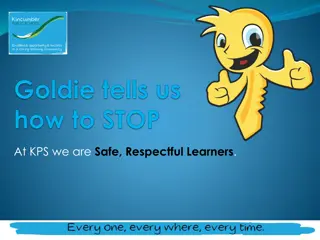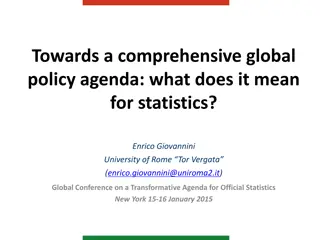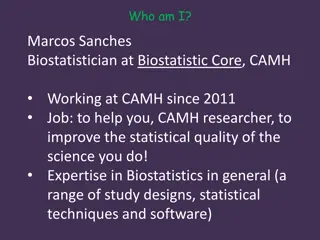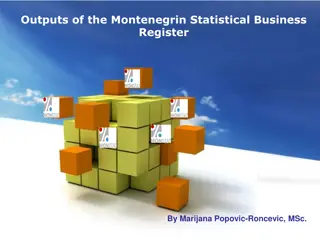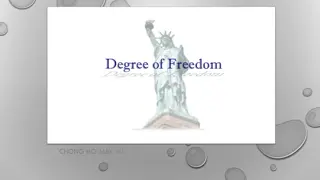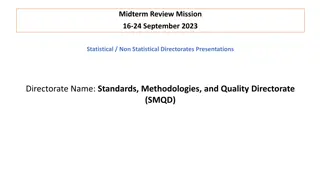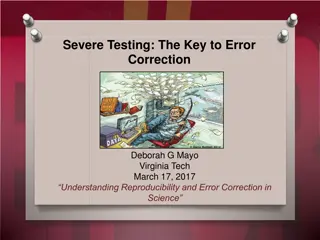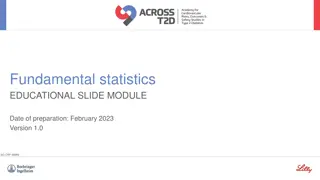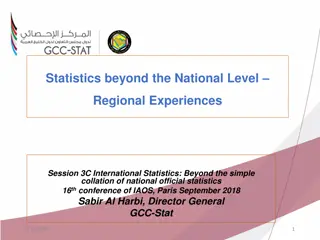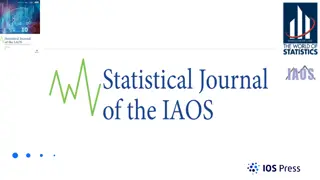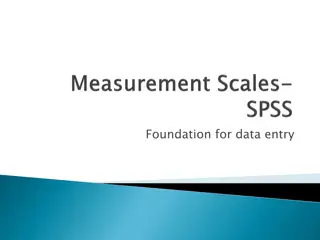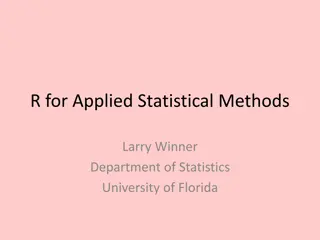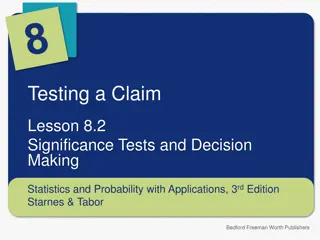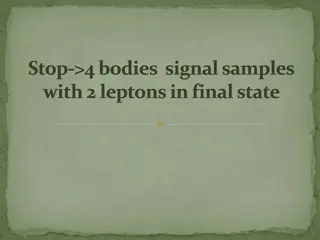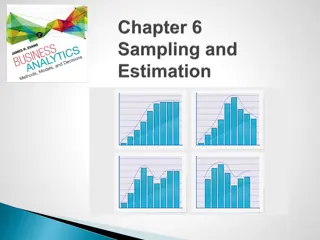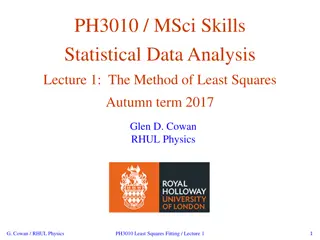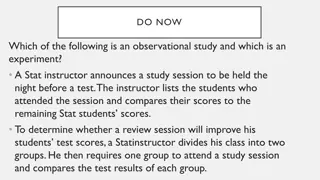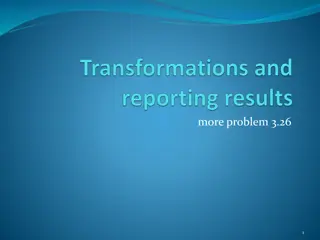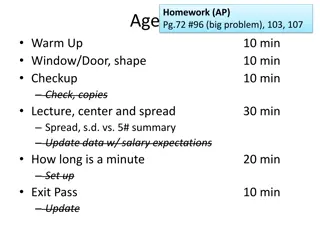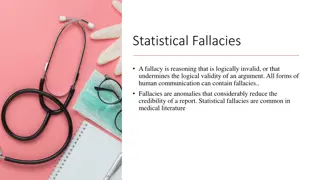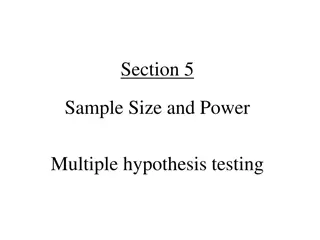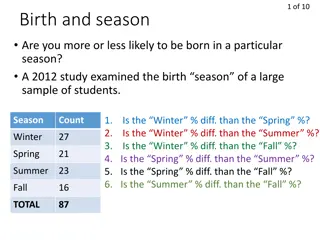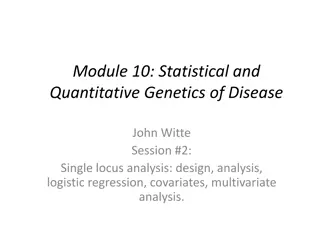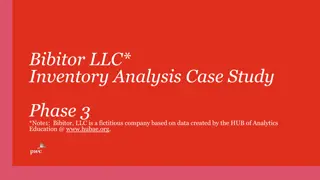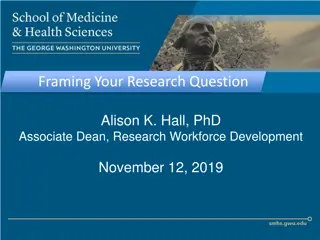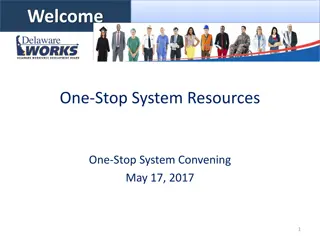Stop, Question, and Frisk Statistical Analysis Overview
An in-depth analysis of the Stop, Question, and Frisk procedures conducted by James Dodson, Richard Koch, Cong Liu, Stephanie Nguyen, and Lei Yang. The study delves into the effectiveness of the practice, its impact on crime rates, potential biases, and environmental influences over segmented years. Through data analysis and visualization techniques, the research aims to address key questions and explore trends in relation to arrests, race, age, and search outcomes.
Download Presentation

Please find below an Image/Link to download the presentation.
The content on the website is provided AS IS for your information and personal use only. It may not be sold, licensed, or shared on other websites without obtaining consent from the author. Download presentation by click this link. If you encounter any issues during the download, it is possible that the publisher has removed the file from their server.
E N D
Presentation Transcript
Stop , Question and Frisk Statistical Analysis Presented by James Dodson, Richard Koch, Cong Liu, Stephanie Nguyen, and Lei Yang
Questions to address for police commissioner Overall, predicting that Stop and Frisk is not successful due to low average proportion of success Is Stop and Frisk decreasing the guns or other types of weapons in this period? Overall, predicting that crime is not decreasing Is Stop and Frisk decreasing crime in general? Overall, predicting that biases are held against Black individuals due to large population of stops Are officers showing a bias during the Stop and Frisk stops?
Our approach to the issue Visualization Assignment to guide initial predictions and steer hypothesis testing JMP for clustering for initial data mining and additional analysis R Programming to review, clean, and analyze data Identify and evaluate overall dependent and independent variables in dataset Convert all variables to binary for logarithmic analysis Descriptive statistics to evaluate year over year changes Logistic regression to evaluate efficiencies and biases within years Stepwise regression to evaluate biases
What data is considered Reason For Stop Reason for Frisk Basis for Search Force Used Sex Race Age Searched Frisked Arrested Summons issued Contraband found Weapon found
Environmental influences Segmented years for analysis 2003-2005: Beginning of stop and frisk 2006-2009: Heightened frequency of stops 2010-2011: Initial controversy over release of taped recordings of police instructions to target black individuals 2012-2013: Heightened visibility and controversy of stop and frisk activity. Marches and social protests begin to occur 2014-2016 : Oversight and court cases impact the process of stop and frisk
Clustering and general predictions Race impacts whether or not arrest occurs Younger individuals more likely to be arrested
Summary statistics in R Program more effective in later years 2013 court ruling heavy impacts results Average stops are males in mid- late 20s
Logistic regression in R Arrest (Dependent) ~ Frisk and Search (Independent) 2014 - 2016: Frisk has inverse relationship with an arrest Potentially inaccurate frisk procedures Frisk (Dependent) ~ Age, Sex, and Race (Independent) 2006 - 2009: Black as race has inverse relationship with frisk Police target individuals based on biases, no outcomes to stops 2014 - 2016: Black as race has low P Value, not impactful to the model Outside forces cause officers to use less biases in stops Use of Force (Dependent) ~ Age, Sex, and Race (Independent) All data: Males have direct relationship with use of force, age has inverse relationship. 2014 - 2016, Black as race has low P Value, not impactful to the model Outside forces cause officers to use less biases in stops All Data: Hispanics have direct relationship with use of force, does not change
Stepwise Regression Force Use (Dependent) ~ All stop reasons, Age, Sex, and Race Outcomes: Age: removed from all models Males: Direct relationship with use of force with most years 2014 - 2016 data was removed as a less impacting variable Race: Variety of changes through models of different years 2014 - 2016 only race variable kept was inverse relationship with Asians and use of force 2006 - 2011 race of Black and Hispanic have direct relationships with use of force
Answers for police commissioner Is Stop and Frisk decreasing the guns or other types of weapons in this period? Accuracy in arrests, contraband, and weapons increased greatly at 2014. However, only 21% of stops ended in arrest in 2016. Is Stop and Frisk decreasing crime in general? As most stops result in misdemeanor crimes. When contrasted with NYC misdemeanor crimes overall, crime did not decrease higher than years prior to stop and frisk. Are officers showing a bias during the Stop and Frisk stops? Officers show bias in early to middle years, but lessen as increased public exposure and court rulings impact procedures
Outside Sources https://www.policeone.com/legal/articles/2774108-Cop-who-made-tapes- accuses-NYPD-of-false-arrest/ http://www.reuters.com/article/us-usa-newyork-march- idUSBRE85G0A920120617 http://www.nytimes.com/2013/08/13/nyregion/stop-and-frisk-practice- violated-rights-judge-rules.html


